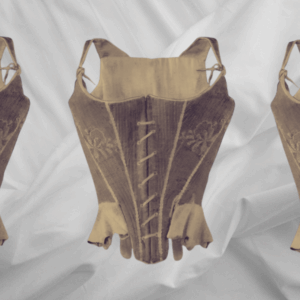In ancient Ireland, centuries before the advent of the printed word, there was a class of professional storyteller known as the seanchaí (pronounced shun-ah-key). Because nothing could be written down, the seanchaí were responsible for maintaining the lore of the culture and sharing it with others. Not only did they pass down the stories of the gods and goddesses, they told the often-violent history of Ireland’s many kings and chieftains.
For instance, if your village bested those pesky Danes in a bloody battle on the beach and you wanted everyone to know about it, it helped to have a seanchaí around to spread the news. Sure, you could let word get out on its own, but why leave it to amateurs when you could hire a pro? In other words, if you wanted your cattle raid to go viral, you needed a seanchaí.
There were three types of seanchaí: those who were in the direct employ of a chieftain or warlord, those who stayed put in a village and served as the community’s storyteller, and those who wandered the countryside, telling stories to whomever would listen. What all three types of seanchaí had in common is that when they plied their trade they could expect to be compensated in the form of food, shelter, and a quiet place by the fire. These oral historians were respected members of Celtic society whose knowledge was valued and esteemed.
Obviously, a lot has changed since then.
We don’t go to the village blacksmith for our mobile devices or wear chain mail to business meetings, but storytellers still play a vital role in our culture.
What’s changed is there are more filters and intermediaries between the person telling the story and the person receiving it—and they all want a piece of the action. Think of all the entities that got paid so you could read this essay—from web hosting service providers to cell phone conglomerates, power companies to electronics manufacturers.
It’s a complicated world, but stories—and storytellers—are still valued. However, somewhere along the line, a certain class of storyteller decided that one of the chief privileges of the position was not having to sell one’s own work. It’s as if all the seanchaí who worked for powerful chieftains got together and decided that roaming the countryside peddling stories was déclassé and beneath their station.
Today, when a storyteller completes a new narrative, she doesn’t head down to the town square or village pub and look for people to tell it to, she has other people do that for her. For many storytellers, this is a relief because selling is a skill like any other and some are good at it while others are not. Most would prefer to be engaged in telling stories not selling them. But this ambition became an expectation so that those who did sell their own stories were seen as a lesser class of storyteller, that “real” storytellers were above that.
To this I say, bullshit.
I know what you’re thinking: I’m not selling my book out of a sack on the subway, the boardwalk or Bev-Mo parking lot.
This isn’t about that. This essay is about art, independence and eliminating the middleman—or at least asking him to step aside and take a breather from time to time.
Whether you’re a writer with the support of a powerful chieftain (publishing company) or the patronage of a village (academic institution) or walking the earth on your own (an indie, emerging, mid-list author, i.e. everyone else) there are things you can do to help your career and it all starts with a slight shift in the way you think about commerce and art.
* * * *
The life of a writer is a life of delayed gratification.
When, for instance, do we celebrate the acceptance of a story? The commissioning of an essay? The assignment of a piece? When we get the email? Or do we wait until we sign the contract? Or, just to be on the safe side, perhaps its best to wait until the work is actually completed or published? Or, better yet, once the check, if there is one, clears?
Usually the answer is “none of the above” because, more often then not, the writer puts off celebrating and goes on to the next project because there is no problem that work won’t solve.
Books are different.
One of the happiest moments of a writer’s life is when the box of newly printed books you have slaved over for the past two to twenty years arrives on your doorstep. But once the joy of holding the book in your hand has subsided and the cover with your name on it has been admired, photographed, uploaded and liked, a problem emerges: What do you do with these books?
The answer is easy: You sell them.
To which most authors respond, “I can’t do that.”
To that I say, “You can and you should.” In fact, you should take advantage of your author’s discount from your publisher, which is typically around 50 percent, and order a few more boxes.
Here’s why. You’re going to have a launch party and at the party you’re going to read from your book and then people are going to buy it and you are going to be the one who sells it to them.
Some math. Let’s say your book is a paperback that sells for $15.99 and your publisher sends you a box of 24 copies. If you sell all of these copies at your launch you’ll take home $383.76. Sell two boxes? That’s $575 and change if you bought the second box with your discount, and $767.52 if your publisher provided it. If your book was published in hardback, the margins are even higher: 48 x $24.99 = $1,199.52. (Pro tip: make sure you get a card reader so you can accept credit card purchases via your phone. I use Square though there are other services available.)
This is not change-your-life money, obviously. It’s not even rent. It is, however, money you can use toward plane tickets, hotel nights and gas purchases for readings outside your area code.
Look at it another way: if you knew ahead of time that someone was going to hand you $100, $500 or $1,000 dollars on the day of your book launch, would you think about your book differently?
Would you consider investing in a publicist? Would you accept the invitation to read on the opposite coast? Would you take time off work to visit your aunt’s book club upstate? Would you get bookmarks made with photos of you posing with your cat?
Why the hell not?
You can even use the income to cater your launch party if you want to get all fancy about it, which is fine, just remember that people are coming to celebrate you and the book that you brought into the world. Not eat miniature quiche puffs.
What that extra income does is give you options that you might not have otherwise had. It will also make you feel good. Not because you have some extra bucks in your pocket, but because you made it happen.
To give your book a chance at finding readers you need to be your book’s best advocate, and to do that you need to hustle. Because if you don’t, those boxes of books are destined to become what Todd Taylor, publisher of Razorcake, calls “the world’s most depressing furniture.”
* * * *
This is not the place to investigate why writers, and to some extent readers, are squeamish about money. As the host of a reading series, I encourage writers to bring books to sell at the merch table. I don’t take a cut and all money from book sales goes back to the author. Yet when I ask the author “How much is your book?” at least half the time he will say, “Oh, I don’t know.”
We’re not talking about baskets of avocados or a pound of oysters here. We’re talking about books that have the price printed on the cover.
My theory is that authors are no less opposed to making money any other type of professional; it’s the transaction that freaks them out.
I get it. When I was a newspaper boy, I was often shanghaied into selling subscriptions for the Washington Post and I hated it. I had no problem getting up at five in the morning in the middle of the winter and walking around my neighborhood in the dark for an hour. The work was easy. But those 45 seconds on the porch pitching the paper and asking for money were torture for me.
I suspect most writers feel the same way about their work. Ask a writer how his project is going and he’ll tell you in explicit detail the ins and outs and ups and downs; but ask him for an elevator pitch and he becomes hesitant, circumspect.
One of the happiest moments of a writer’s life is when the box of newly printed books you have slaved over for the past two to twenty years arrives on your doorstep.
It’s easy to talk about work. Work is what we do. It’s our holy ritual. We do it for ourselves and no one else. But once we describe that work in terms of its final shape, we’re no longer talking about work, we’re talking about a thing to be read, scrutinized, evaluated and appraised. In other words, we’re talking about a product, a commodity, something that no longer belongs to us.
I believe that writers want to be paid for their work, but when it comes to selling the finished product our emotions run from ambivalent to apprehensive. But you know who isn’t squeamish about selling their stuff?
Rock musicians. It used to be that merchandise sales, while crucial to the survival of unsigned bands, were barely worth the trouble once rock bands made it big. Many leased the selling of t-shirts and posters to third party vendors. The margins were considered too small for bands to worry about.
Not anymore.
Now when you go to a rock concert the merch tables are overflowing with t-shirts, posters, photographs, key chains, you name it. Some bands tour with a veritable pop-up store. And you know something? Now that the musicians are fully invested in the design, creation and production of their merchandise, it’s gotten a lot better.
For writers it’s not always (ever?) about the money, which makes our reluctance to enter the marketplace all the more mysterious. There are other benefits to selling a book directly to readers.
Juliet Escoria, author of the short story collection Black Cloud (Civil Coping Mechanism) recently wrote, published and sold a limited edition poetry chapbook called Witch Babies. You couldn’t purchase it on Amazon or through a publisher. Witch Babies was only available through her social media accounts—Facebook, Twitter, Instagram, Tumblr—and sold out in a few hours.
It’s all the more remarkable when you consider that Escoria hadn’t published poetry before. Because she was branching out in a new genre she wanted to put something out herself and gauge the response before trying to place an entire manuscript with a publisher. Judging from the initial demand: mission accomplished.
After purchasing all of the supplies—“paper, the screen-printing stuff, an industrial hole punch, a paper cutter, envelopes, etc.”—and paying Carabella Sands, the artist who illustrated the chapbook, Escoria told me she made “maybe $100.”
“So while it netted me a positive income, if you look at the dollars per hour of labor, no, it totally doesn’t make sense, but I wasn’t really expecting it to.”
For Escoria, creating her own chapbook was gratifying for reasons that went well beyond the economics of the project. “I liked the complete control it gave me—I could decide on the size, the number of pages, the type of paper, what the cover would look like, etc. I also liked the idea of not only making the poems, but hand-making the physical book, an art form in two different ways.”
This is nothing new, of course. People have been making zines—self-produced magazines—since photocopying machines started rolling off the assembly line and became essential office equipment. Zines are a staple (pardon the pun) of the do-it-yourself movement. With the explosion of social media platforms it’s never been easier to share your thoughts with the world. Yet we’re seeing a resurgence in zines that rivals the rediscovery of vinyl with zine fests popping up around the country.
Why is that? Readers enjoy the intimacy that comes with owning a tangible object that they receive directly from the author, who created it with her own hands. Escoria took this a step further by signing each copy in her own blood.
Try that on Amazon.
* * * *
Although Chelsea Hodson, author of Pity the Animal (Future Tense Books), had created zines all through high school—she even got a job at Kinko’s so she could make copies for free—she chose Tumblr as the platform for her project Inventory, in which she catalogued all of her possessions.
From January 1, 2013, to October 19, 2014, she posted a photo of herself with the item she was inventorying along with prose relating to that object. She posted a new object every day for 657 straight days.
“It was important to me that this element of order stay in place—the controls in the experiment stayed controls, while my writing served as the variable in each day’s experiment.”
The project did not lend itself to a zine format. The cost of publishing a project of that scope would have been prohibitive. Instead she turned to Tumblr. All she needed was a camera phone and a way to upload the image to her Tumblr feed. (Hodson also paid $49 for the layout that best suited the project’s aesthetic.) No ink, no paper, no postage, and immediately accessible to anyone with an Internet connection.
“It was freeing to know the project was wholly self-reliant,” Hodson told me. “I had Tumblr as my medium for making it public, but it was up to me to photograph, write, edit, and publish. It became this daily dialogue with whoever was reading it.”
Though her concept is image-driven, the project was sustained by the writing and by its own momentum. Hodson credits her zine making background. “I love being edited, but
I’ve also learned a lot from just spending time with my own work, trying to make the best thing I can make – even if it’s just a Tumblr post.”
Obviously, Hodson didn’t make any money from Inventory; that was never the point of the project because there’s nothing for sale. It did, however, lead to other opportunities. Inventory is many things: a meditation on memory, an exercise in nostalgia, a commentary on consumer culture, an ongoing engagement between the artist and the reader. It’s a concept, conceit and constraint animated by the intensity of art.
That, I think, is the main thing. The key to facilitating a direct connection with readers isn’t necessarily to think like a merchant. There are lots of marketing and publicity gurus who will take your money and teach you how to get blocked, muted and unfriended on the Internet. It’s more a question of positioning, making yourself and your work available to the world at large by getting it out in front of them. The key is to think like an artist.
Writers are creators. We give shape to words in ways the world has never seen before. We make things. As artists we are fortunate that the things we make take a tangible shape. Embrace that. Embrace the process and make the best thing you can make. I’m not asking you to change who you are or what you do. Become the duke of your local Starbucks or the dean of the department. You be you. But when it comes time to take your story to the next village, to walk the earth and share your work with the world, its often more rewarding to make your own path than follow the one someone sets out for you. Give it a go. I’ll have a nice place by the fire waiting for you.
Jim Ruland
Jim Ruland is a veteran of the Navy, the author of the novel Forest of Fortune, and the curator of the SoCal-based reading series Vermin on the Mount, now in its 11th year.




















